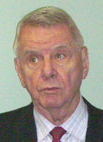Public Health Week is a time to think about immediate challenges and the long-term health of Kentucky and its communities

“Have you eaten at a restaurant lately? Did you brush your teeth this morning? If so, the Department for Public Health has touched your life,” state Health Commissioner Hiram Polk writes in a column for Kentucky newspapers. He notes that his agency “doesn’t only inspect the conditions of restaurants you visit, but also worked to make Kentucky the first state to add fluoride to your water to help protect your teeth.”
 |
| Dr. Hiram Polk |
Polk, an internationally renowned surgeon, says his top priority as commissioner is the heroin epidemic, “a crisis unlike any we have ever faced in public health.” His agency “has focused on establishing and expanding preventive programs beginning with early childhood education (K-3) stressing the negative consequences of alcohol, drug and tobacco use, and educating our children about the positive outcomes associated with good nutrition and exercise. We have also launched a mobile pharmacy traveling statewide dispensing Narcan, an overdose antidote, and testing Kentuckians for hepatitis C and HIV, both of which are increasing challenges in our communities largely due to drug addiction.”
The definition of public health has expanded in recent years, going beyond environmental health and clinical services to a broader concern for the overall health of communities, states and the nation. Kentucky has one of the lowest health rankings among the states, so “We must also tackle the underlying causes of poor health and disease risk,” says the University of Kentucky College of Public Health.
“Those causes are rooted in how and where we live, learn, work and play. It’s the child who goes to school hungry and can’t take full advantage of the education that leads to a healthier, more productive adulthood. It’s the low-wage worker who must choose between losing much-needed income and staying home with a sick child. It’s the family that struggles to find nutritious, affordable food anywhere in their community. It’s the student who can’t walk to school because there are no sidewalks. . . . If we partner across public and private sectors to ensure decisions are made with people’s health in mind, we can build healthier communities.”